Living Abroad in Ireland
The Land of a "Hundred Thousand Welcomes"
Article and photos by Anna Benn
Published 11/14/2019
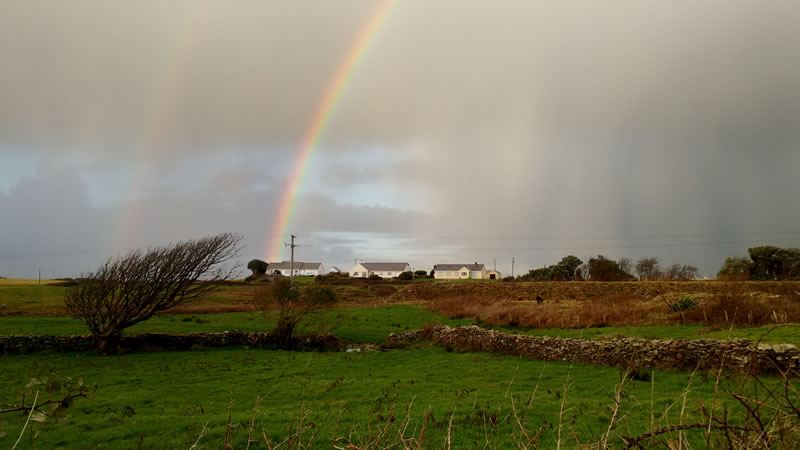 |
| Miltown Malbay, Co. Clare. |
Céad Míle Fáilte, literally “a hundred thousand welcomes,” is a common greeting in Ireland (at least among Irish speakers, or gaeilgeoirs). Of all the countries I’ve traveled through, there is a friendliness and overwhelming hospitality here that I’ve never encountered elsewhere. I’ve had strangers chat to me in pubs for no other reason than they’re interested to hear where I’m from and where I’m going. I’ve never entered an Irish home where the host hadn’t offered me a cup of tea before I’d even taken off my coat. Every time I visited Dublin, I was practically barreled over by friends offering to put me up on spare beds or couches, inviting me over for dinner, or insisting we meet up so they can buy me a pint.
How I Became an Expat
It took me 12 years of coming and going before I, an American national, finally managed to obtain Irish residency. There are many reasons to move to Ireland, and the most common I've encountered among other expats include love of its history, love of the culture, and love of a particular person (in my case, it was all three). But when it comes to working, Ireland's job market is small and highly competitive, mostly centered around its capital city, Dublin. If you're a national of a country outside of the European Union, you will need to be sponsored by your employer for an Employment Permit. There are various types of permits depending on your skills, nationality, and marriage/relationship situation, but generally, a minimum salary of €30,000+ per year is a requirement for applying. There are loopholes: as a university student you can legally work part-time, and once you graduate, you can apply for a one-time visa extension scheme that will let you work for a year (now extended to two years), with the ultimate aim of obtaining sponsorship.
I hadn't known about the visa extension option when I first emigrated to Ireland in 2008, an American college graduate with a shiny, new bachelor's degree in a not-very-useful humanities subject. I was new to the workforce and three months ahead of the worst recession the world had seen since the Great Depression. Ireland was a different country back then, coming down from the economic boom of the 90s, known as the Celtic Tiger, and at the apex of an unwieldy property bubble.
The country was still struggling with growing pains as it moved from being a largely poor, rural, and Catholic nation to what it is now — a multicultural host to a bevy of multinational corporations' European headquarters. Parts of Dublin are like a backdrop in a science fiction movie. The Liffey River that bisects the city is now lined with skyscrapers tiled in blue-green mirrored glass. Food trucks, trendy cafes, and cocktail bars populate the city center. Without going too far out of your way, you’ll be able to eat falafel, poke, pho, bibimbap, or any other cuisine that my mother-in-law--who enjoys her pot of strong black tea and a traditional Irish fry (a dish of bacon, sausages, black and white pudding, tomato, and fried eggs, once described to me as “a heart attack on a plate”) — disparages as “posh food.”
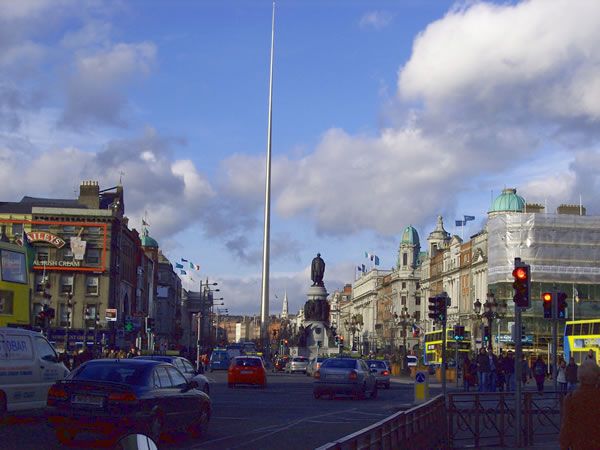 |
| O’Connell Street, Dublin City. |
Living in Dublin
Dublin is cosmopolitan and politically liberal, a melting pot of different cultures and new ideas. Oversized cranes are diligently building new office buildings by the waterfront for multinational corporations that will drive rents up, slowly fueling the diaspora from Dublin of everyone who doesn't work in the tech industry. The go-to website for renting or buying property in Ireland is daft.ie, and it can be worth a perusal before you move over to get a grasp of the current market (spoiler: if you’re looking into housing prices in Dublin and the cost of living, make sure you have a stiff drink on hand).
In the Liberties, a neighborhood on the far side of the city, a labyrinth of brick townhouses offers remnants of old, turn-of-the-century Dublin. The area includes a quiet, moss-eaten Victorian graveyard behind a wrought-iron fence. There is a copper-domed gazebo in the center of a roundabout, with a placid, red-robed statue of Jesus. Portraits of Pope Francis and votives of the Sacred Heart peek out of living room windows. I once sat on the ledge of the gazebo and watched three boys cycle past, trying to out-wheelie each other on their bikes. One of them cycled one-handed, leading a scruffy pony on a rope that clattered down the street after him.
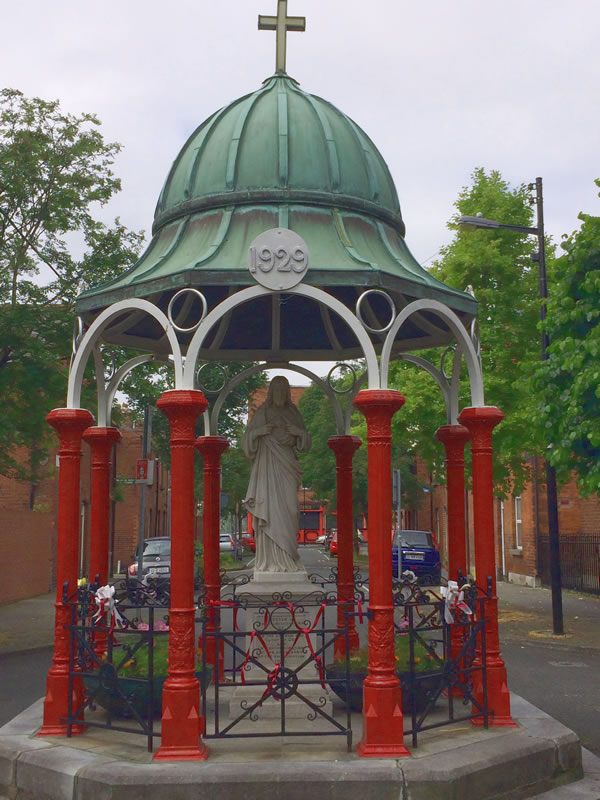 |
| The Coombe, Dublin. |
Doing My First Internship
During my first summer in Ireland, I took an unpaid internship at the Lilliput Press, a publishing house in Stonybatter, another Dublin neighborhood that has thus far escaped gentrification. The building was (and still is) an old creamery behind a blue picket gate. Inside, the whitewashed stone walls wept with condensation and the eaves dripped rainwater. The three office rooms exploded with shelves of back publications, posters for book launches, and one lazy Persian cat who followed the sunlight from window to window. I worked packaging books and shipping them out to customers, reading manuscripts from the slush pile, and reviewing them for the head editor. Dublin had a small but thriving publishing industry (anyone looking for jobs or internships in the Irish publishing can check out the Publishing Ireland website). Now I had the in I was seeking!
I had an in, but I did not have the right to work or even stay in the country for longer than 90 days. I took a weekend visa run to Madrid, and got past customs by the skin of my teeth. (For those interested, Ryanair offers cheap flights in and out of five different Irish airports.) I decided it was best not to overstay my tourist visa, so I returned to America.
Coming to Galway
I returned to Ireland a few years later on a student visa to study a Master’s degree at University of Ireland, Galway. Galway, a coastal city on the other side of the country from Dublin, was small, squat, and colorful. Its main street was a cacophony of music spilling from pubs, buskers and street dancers holding their own in the open air. The near-constant rain drove you into pubs for shelter, where old men swilling Guinness were eager to tell you all about their lives. Where Dublin was aggressive, energetic, dirty, and charming, Galway was friendly, welcoming, forgiving of your mistakes. It is a bohemian town, filled with writers and actors frequenting poetry slams and performing one-act plays.
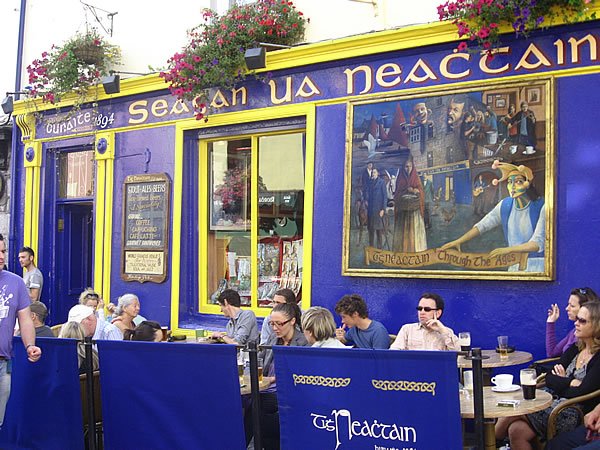 |
| Shop Street, Galway City. |
Coming from a largely oral heritage, words — especially poetry — have an almost sacred role in Irish culture. Under Brehon Law, the set of laws governing Ireland’s ancient Celtic civilization, a complex hierarchy of poets enjoyed social status on par with royalty. To kill the Ollamh Érenn, the Chief Poet, incurred a fine that was equal to that for killing a king. This love of poetry has endured through the years, and Ireland has a literary culture that is second to none. For a small island, Ireland is overflowing with small presses and independent literary magazines. Even in the pint-sized Galway, it is impossible to walk through the city on any given day without running into a book launch or a poetry reading.
Back To Dublin to Work and Get Married
I went back to Dublin after graduation, legal to work in the country by the grace of the Third Level Graduate Programme (aka "The Scheme"). I found work at another small publishing company, and at the end of the year, my boss offered to sponsor me. However, due to failure to complete a certain step in the long parade of red tape, my application was rejected. I ran through my large cache of visa loopholes and found I was applicable for none of them.
I went to speak to a private immigration consultant, a father-son fly-by-night operation crammed into a tiny office above a shop. They offered me biscuits and tea, and then charged me 100 euros for an hour of back-and-forth that was Beckett-esque in its absurdity. “You could do a PhD,” the consultant suggested. “Or do you have a boyfriend? A girlfriend?” I had the former. He suggested the De Facto relationship visa, which gave a foreign national the right to work if they could prove they were in a serious relationship with an Irish citizen. However, I had already looked into it: we needed a paper trail of at least two years to prove that we had been cohabitating, and we had only recently moved in together. “Then I’m afraid your only option is to get married.” So, after a few months of paperwork and interviews to satisfy immigration that yes, we really had been dating for years. No, this was not a marriage of convenience. We did.
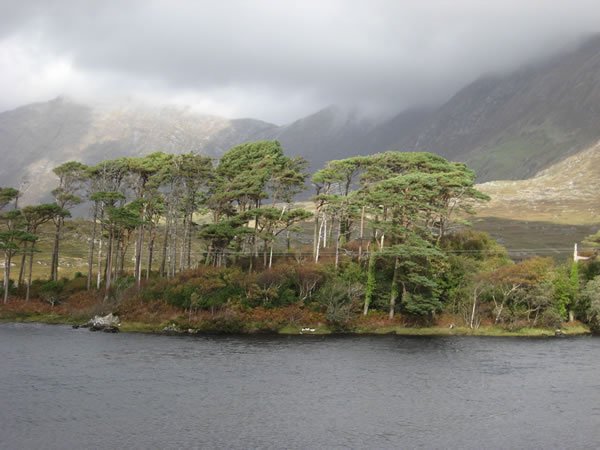 |
| Connemara, Co. Galway. |
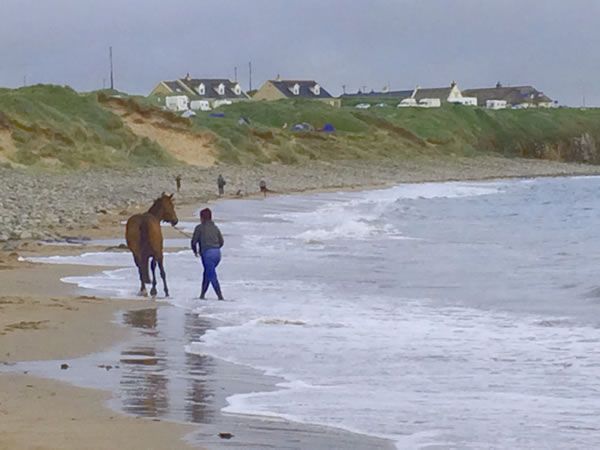 |
| Spanish Point, Co. Clare. |
Daily Life and Rituals in the West of Ireland
I frequently travel out West to County Clare to visit my husband's family, who live in Miltown Malbay, a one-street town with two churches and around 20 pubs. It’s worlds away from Dublin and even the vibrant, buzzing atmosphere of Galway. People exercise their horses in the surf at Spanish Point, the coastline off of which ships from the Spanish armada sank in the 16th century. Farmers drive enormous tractors up Main Street every Sunday on their way to Mass, greeting friends with a wave and strangers with a slight two-fingered salute. The town’s claim to fame is July's Willie Clancy Festival, which sprang up around a music school founded by the eponymous Uilleann piper. Every summer musicians come to attend the music students' final concert. The entire week before the concert, people gather in pubs, bringing with them fiddles, guitars, concertinas, and pipes. Strangers will meet, try out a few bars together, and before you know it, the entire pub has erupted into music.
Certain songs are cultural touchstones: everyone knows them by heart, songs that are wild, joyous, and melancholy. This spontaneous parthenogenesis of music is the Irish phenomenon known as the seisún, pronounced "sesh-OON," or sometimes just referred to as "The Sesh." All are welcome to sing or clap along, or express enthusiasm by letting out a high-pitched "eeeeeYEW!" At some point, usually towards the end of the night, an old-timer leans back in his chair, shuts his eyes, and sings a mournful dirge, a patriotic air, or a love song. All speaking is forbidden for the length of these songs. You will know it is begun by the sound of half a dozen of the people closest to the old-timer hissing "ssshhhhhh!!! shhhhhhhhh!!" until all is silent.
As rural areas generally tend to be, my in-laws’ town is more traditional, conservative, and religious than cities. Having been raised Catholic, I am familiar with the saints and the rituals, but the Catholicism of the West of Ireland is older and more superstitious than my experience. My mother-in-law’s kitchen is covered in mass cards from departed friends and family. She keeps a gallon jug of holy water from Knock, a shrine to the Virgin Mary in County Mayo, close at hand. Before any of us get into a car, she anoints our foreheads with holy water with the same surety with which she waves at magpies, or buries a statue of the Child of Prague before a family wedding to ensure good weather the following day.
A mile or so out of town, past cow pastures and bog land where the turf has been excavated and left in haystack shapes to dry out for use as fuel, is St. Joseph’s Well. When missionaries spread Christianity in Ireland, they shrewdly allowed certain pagan customs — such as wells consecrated to various deities — to remain, thereby conflating them with the new Christian ways. And St. Joseph’s Well certainly has an otherworldly feel to it, as you descend a small set of stairs to a circular path, where you may find old women walking laps and praying the rosary. In the underbrush, visitors have left statues and votives of the Virgin Mary her husband St. Joseph. The well itself is a whitewashed, mossy hollow crowded with rosary beads, tea candles, prayer cards, and resin statues.
As the story goes, the well was originally named St. Lachteen’s Well, after a saint of antiquity who was in the area and couldn’t find any water to baptise a child in the neighborhood. St. Lachteen made the sign of the cross on the ground, and a spring of water appeared. According to tradition, an old woman then washed her clothes in the well and it changed location. The well was then renamed after St. Joseph, because the two saints shared March 19 as their feast day, and St. Joseph was more famous.
Ireland, as I understand it, is a country in constant flux, trying to carve out its role in the European Union while at the same time maintaining its own culture. The people struggle to come to terms with their own rich history, beautiful and inspirational, along with its darker aspects. Accustomed for generations to being the country from which young people emigrated en masse, Ireland is now learning how to extend their famed “hundred thousand welcomes” to immigrants and refugees.
Parts of Ireland — cities especially — are changing ways faster than the country’s staid bureaucracy and infrastructure. However, in all the years I’ve spent studying and living here, the core elements of the country that I love the most have endured: the robust literary and musical culture, the vibrant sense of humor, the shirt-off-your-back generosity, and the ferocious love of the land and its heritage.
|
Anna Benn is a writer, currently living in Dublin, Ireland. She is a graduate of Trinity College and NUI Galway, and has lived, worked, and travelled in Russia, Southeast Asia, South America, and other far-flung stretches of the globe. She enjoys knitting, borscht, and being a shield maiden extra in Vikings. |
|
